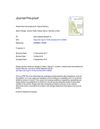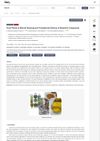In Vitro, Ex Vivo, Penetration (EpiDerm) and in Vivo Dermatokinetics of Ketoconazole Loaded Solid Lipid Nanoparticles for Topical Delivery
May 2021
in “
Research Square (Research Square)
”

TLDR Ketoconazole loaded solid lipid nanoparticles can penetrate skin better than regular drug suspension and marketed product, providing slow, sustained release and improved stability.
The study investigated the use of ketoconazole (KTZ) loaded solid lipid nanoparticles (KTZ-SLNs) for enhanced permeation across rat skin. The KTZ-SLNs were evaluated for various properties including size, distribution, zeta potential, entrapment efficiency, drug release, and compatibility with excipients. The study found that the optimized KTZ-SLNs had an optimal particle size of 291 nm, a high negative zeta potential of -27.7 mV, and were compatible with the excipients used. The in-vitro release of the drug was slow and sustained, while ex vivo permeation parameters were significantly higher than those of the drug suspension and marketed product. The drug retention was 10 times higher than the drug suspension and 5 times higher than the marketed product. The study also found that the KTZ-SLNs could penetrate beyond the human stratum corneum into viable epidermis, and that the improved penetration was through the human follicular pathway. The KTZ-SLNs were stable over 12 months under set conditions.



